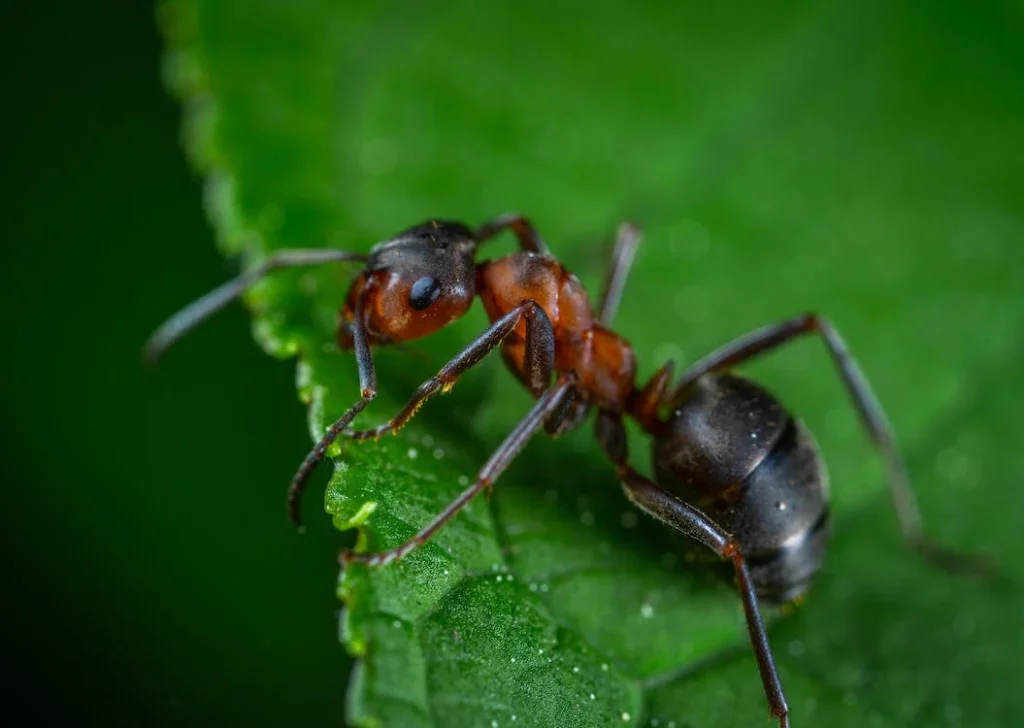How to Get Rid of Ants: A Comprehensive Step-by-Step Guide


How to Get Rid of Ants: A Comprehensive Step-by-Step Guide


Introduction
Dealing with ants invading your home can be frustrating. These tiny insects can quickly infest your kitchen, pantry, or any area where food is present. If you’re wondering how to get rid of ants effectively, you’ve come to the right place. In this comprehensive step-by-step guide, we will provide you with all the necessary information and detailed instructions to help you eliminate ants from your home and prevent them from returning.
Step 1: Identify the Type of Ants
Before you begin implementing ant control methods, it’s crucial to identify the type of ants you’re dealing with. Different ant species may require specific treatment methods. Here are a few common types of ants you might encounter:
Odorous House Ants: These ants are small, dark brown, and emit a strong, rotten smell when crushed.
Carpenter Ants: They are larger than other ants, usually black or reddish. They create tunnels in wood and can cause structural damage.
Argentine Ants: These ants are light to dark brown in color and form large colonies.
Pavement Ants: They are small, dark brown, or black and often nest in pavement cracks or along the edges of sidewalks.
If you’re unsure about the ant species, consider seeking assistance from a pest control professional to identify them correctly.
Step 2: Locate Ant Trails and Entry Points
To effectively eliminate ants, it’s crucial to locate their trails and entry points. Ants leave behind pheromone trails that guide other ants to food sources. By tracing these trails, you can determine their entry points and target them for treatment. Follow these steps:
Observe the ants and track their movement. Look for lines or clusters of ants moving in a specific direction.
Check for cracks, gaps, or holes in walls, windows, doors, and floors that ants might use as entry points.
Pay attention to areas where you’ve seen ants gathering or trailing, such as kitchen counters or food storage areas.
By identifying the trails and entry points, you can focus your efforts on the areas where ants are most active.
Step 3: Keep Your Home Clean and Remove Attractants
Prevention is key to long-term ant control. By maintaining a clean environment and removing attractants, you can minimize the likelihood of ant infestations. Follow these steps:
Clean up spills and crumbs promptly. Ants are attracted to food sources, so keeping your surfaces clean is essential.
Store food in airtight containers to prevent ants from accessing them.
Regularly empty and clean trash cans to avoid food odors that attract ants.
Wipe down surfaces with a mixture of vinegar and water to eliminate any residual food odors that might attract ants.
Seal cracks and gaps in windows, doors, and walls using caulk or weatherstripping to prevent ants from entering your home.
Maintaining a clean and tidy home will make it less appealing to ants and reduce the chances of an infestation.
Step 4: Natural Ant Remedies
If you prefer to use natural remedies to control ants, there are several options available. These remedies are safe for use around children and pets. Follow these steps:
Sprinkle powdered cinnamon, black pepper, or cayenne pepper near ant trails or entry points. Ants dislike the strong scent and will avoid these areas.
Create a mixture of equal parts vinegar and water. Spray it directly on ants or wipe down surfaces to remove their scent trails.
Place small dishes of sugar water or honey near ant trails. Once the ants gather around the sweet bait, dispose of the dish or trap and rinse the area thoroughly.
Natural remedies can be effective for deterring ants, but they may not eliminate an extensive infestation completely.
Step 5: Ant Baits and Insecticides
If you’re dealing with a persistent ant infestation, using ant baits and insecticides can help eradicate the colony. Follow these steps:
Place ant baits near ant trails or entry points. These baits contain a slow-acting poison that ants will carry back to the colony, eventually eliminating the entire nest.
Use ant bait stations or gels that are specifically designed for indoor ant control. Follow the instructions on the product carefully.
Apply residual insecticides around entry points or areas where ants are active. These insecticides create a barrier that repels or kills ants.
When using insecticides, always read and follow the instructions on the product label. Exercise caution and keep them out of reach of children and pets.
Step 6: Eliminating Outdoor Ant Nests
In some cases, ants may have established nests outdoors and are only foraging inside your home. To eliminate outdoor ant nests, follow these steps:
Locate the ant nest by observing the ants’ movement and following their trails.
Once you’ve located the nest, treat it with an appropriate outdoor insecticide or ant bait specifically designed for outdoor use.
Follow the instructions on the product label for application and safety guidelines.
Regularly monitor the treated area and reapply the treatment if necessary.
Eliminating outdoor ant nests will help prevent further infestations and minimize the chances of ants reestablishing their presence indoors.
Step 7: Monitor and Prevent Future Infestations
Even after successfully eliminating ants, it’s important to monitor and implement preventive measures to avoid future infestations. Follow these steps:
Regularly inspect your home for potential entry points and seal them promptly.
Keep your home clean and free of food debris that might attract ants.
Trim back trees and shrubs that touch your home, asthey can serve as bridges for ants to enter.
Consider using ant repellent granules or perimeter sprays around the exterior of your home to create a barrier against ants.
By being proactive and taking preventive measures, you can reduce the chances of ants returning to your home.
Conclusion
Getting rid of ants requires a combination of identification, elimination, and prevention strategies. By following this comprehensive step-by-step guide, you can effectively control ant infestations in your home. Remember to identify the ant species, locate their trails and entry points, keep your home clean and remove attractants, use natural remedies or ant baits and insecticides as needed, eliminate outdoor ant nests if necessary, and implement preventive measures to avoid future infestations. With persistence and diligence, you can successfully eliminate ants from your living space and maintain an ant-free environment.
Remember, if you’re dealing with a severe or persistent ant infestation, it’s advisable to seek professional pest control assistance to ensure effective and long-term elimination of the problem.







